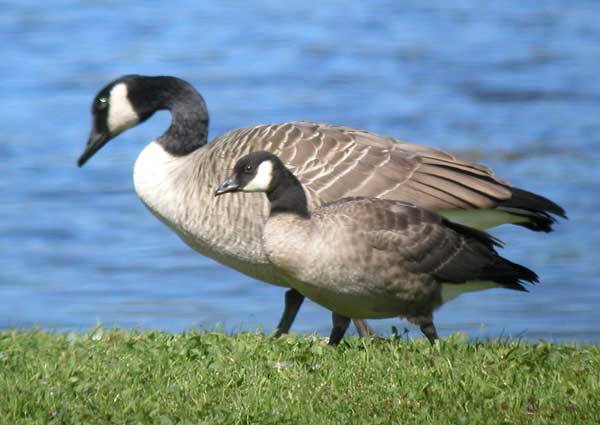HATCHERY STEELHEAD FISHING is off to a pretty slow start out on the West End.
About as slow as anglers attempting to to re-rig their steelheading setups with numb fingers thanks to the recent below-freezing temperatures.
Maybe the temperamental beasts are spooked by the presence of the sun.
“Slow, slow, slow,” said Randy Lato of All-Ways Fishing (360-374-2052) when asked for a recent fishing report.
“Water levels are fine, levels are great, they are going down really slow. We had a guides meeting the other night, guys that had fished Tuesday and most of them said they hadn’t even gotten a bite.
“The net pressure is nil, there’s just nothing.”
Lato said he had a solid outing earlier in the week while fishing the Bogachiel River.
“Monday I had a really good day, limited our group with hatchery fish by noon,” he said.
“One on plugs and the other two on bait, salmon roe from ocean fishing. I guess it was a freak deal because I haven’t heard anything else.”
Kevin Hinchen of Forks Outfitters (360-374-6161) said hand warmers have been flying off the shelves, but there hasn’t been much successful steelhead chatter.
“Everybody is saying there’s no fish,” Hinchen said.
“It’s curious because the word is the [Bogachiel] hatchery is full, so they came in. It’s kind of strange.
Dealing with the cold and being shut out in the cold, angling-wise, is trouble on two fronts.
“I’d hate to have gone fishing this morning it was 19 degrees,” Hinchen said.
He did add that the store is expecting a bunch of Forks Outfitters Sand Shrimp to arrive today, so anglers who like to use the bobber fishing technique can stock up for more productive portions of the season.
From the beaches
Steelhead fishing hasn’t gone any better for anglers wetting their lines in the salt water in Jefferson County and surrounding areas.
“There hasn’t been much activity for beach casters hunting steelhead at Point Wilson [Port Townsend], Marrowstone Point, or even on the traditional beaches of Whidbey Island across from Port Townsend,” said Quilcene’s Ward Norden, a former fisheries biologist and owner of Snapper Tackle Co.
“A few steelhead have been caught on the usual Spin-N-Glo/ hoochy combinations. Fishing should improve as we get farther into December.”
Ridge ski opening delayed
This coming Sunday was the intended opening day for the Hurricane Ridge Ski and Snowboard Area but Mother Nature isn’t cooperating.
As of noon Thursday, the Ridge was bathed in beautiful sunlight, but only a very light layer of snow was visible via the Ridge webcam.
In years past, a base of around 36 inches of snow has been needed to open for skiing and snowboarding.
A weekend weather front may help build the base, so think snow in the meantime and maybe it will manifest.
The road to Hurricane Ridge remains open Friday through Sunday and holiday Mondays from 9 a.m. to 4 p.m.
Call 360-565-313 to check on road conditions before heading up.
Ice on the pond
The recent cold has impacted Lake Leland near Quilcene.
“Ice is starting to form along edges of Lake Leland, so fishing is now in winter mode until March,” Norden said. “A few hardy souls are still out in the occasional boat and at the pier. Bring a serious bucket of patience to wait for the infrequent bites as the water is now in the 30s.”
Duck hunt
Norden said bird hunters have had some success recently.
“Waterfowl hunters have been doing pretty well on mallards and pintails on our local bays even though the large flocks of northern birds (mostly widgeon ducks) are about two weeks late,” Norden said. “There are a very few northern birds already in, so I expect the storms of this weekend and next week to bring in the majority.
Norden also saw a flock of cackling geese in the fields near Quilcene last week.
“These birds usually winter in the fields of the Willamette Valley [in Oregon],” Norden said. “I wonder if they will stay. Quilcene is much like their summer grounds near the Kenai Peninsula [in Alaska].”
Cackling geese, or “cacklers” as Norden called them, appear very similar to Canada geese.
Audubon said “the two birds are virtually identical — so much so that until 2004 they were considered one species.”
Size is the easiest way to tell the difference between the two birds, according to Audubon.
“Cacklings are small; some are barely larger than a Mallard. In contrast, the largest Canada Goose can weigh twice as much as a Cackling Goose. But size varies, and some smaller Canada Geese (females and immature birds especially) can stay nearly as compact as their estranged counterparts. Still, size is a good first indicator—any mini goose warrants further investigation.”
Sounds produced by the birds also can help differentiate the species. Canada geese have the loud honk, cacklers make “high-pitched yips, squeals and of course, cackles.”
For more information on cackling geese, visit tinyurl.com/PDN-CacklingGeese.
________
Sports reporter Michael Carman can be contacted at 360-417-3525 or mcarman@peninsuladailynews.com.

